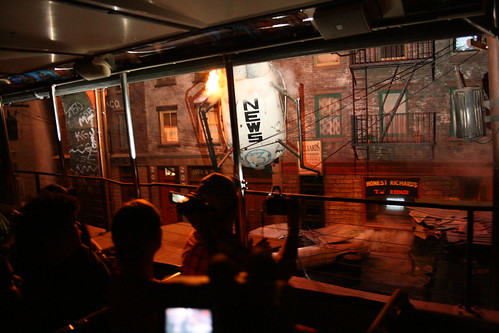
Take notice & describe the experience - description of evidence
Write freely about what you have been doing, feeling, thinking, etc…
Comment on what you know, need, etc…
Comment on initial thoughts and ideas gained in the workshops and from your reading, researching, teaching and learning experiences etc…
List the actions you took.
This morning I met Brian in H513a where he had the Smart Board turned on. We quickly went down to H515 (where I have been teaching) and found that the Board needed to be plugged in there – but it was set up just the same. The computer is incredibly slow to boot up in H515.
So back in H513a Brian showed me how you can just use the back of your fingernail (or your fingertip) to touch the Board, and this is like left clicking with a mouse. This way I could open a Power point show, and using the Board’s pens write on a slide, and erase the writing, or save it.
He also showed me how to bring up a keyboard on to the screen, and more exciting (and so very Brianish) how you could play a video, especially a cute and amusing one!
Next he showed me the Note Pad software that allows you for example, to create a slide show, perhaps more easily than with Power point. This showed me that I really need a Smart Board in my office along with a projector! (More about this later…)
I mentioned about possibly using the Board to record the written results of students’ group work. I had thought how time-consuming it would be for them all to write up their findings onto the Board – or perhaps one group could work with the Board and the others with paper as usual. However Brian came up with the solution – I can use my digital camera to photograph the on-paper writing, and then with a card reader I can download these photos and then insert each on to a new blank page in Note pad. Presto – we can all read each group’s findings! I need to try this!
Best of all, I can access Brian’s training manual on the Shared drive.
Analyse the experience - implications of decision/action, reaction
- Think about what happened and why.
- Outline what you could have done better or differently.
- Indicate some strategies which may help next time.
- Comment on what worked and what did not.
This training session was so much more worthwhile for me than one I attended earlier in the year that was run by the manufacturers or distributors of Smart Boards. That consisted of a whole heap of features without any links to how I could use them.
When I think about it, the training session worked because the trainer was friendly and had a sense of humour. He showed me some features, let me try a few things, made very helpful suggestions, and showed me where to find answers if I forgot something or got stuck.
Training that doesn’t cover too much but starts you down a track of useful application of the technology is great. One problem for me is that teaching is nearly over for the semester. However there is next semester – but then I’m not in either of the rooms that have Smart Boards!
Take Action - Reflect on what you learned and how it will be used
Indicate what you learned, what helped and why.
How will the things you learned change or affect your future work or study?
Identify what you need to explore further or seek help with.
List a small number of goals – link these to your decision-making process in step 2.
In future I will definitely have a go at this, particularly the group work idea (GOAL!), as I think students appreciate it when you are trying something new and quite like being part of that. I will do some try-out preparation before actually introducing it in class.
I have the manual for help, but I will not hesitate to ask Brian questions if I still have a problem I can’t solve.
Overall I will appear more techno-savvy! The drawback here is that tapping on the Board isn’t always guaranteed to work – e.g. for closing windows. This could create a few issues for me in class – to be patient, not to panic and to think of other ways to get out of the trap! Brian had to try several times and then to re-align the pointer (arrow) with where you would tap (the software has a function for this).
Something else I learned was that we have only two of these Boards at Forth Street, and they are within 4 doors of each other on the same floor of the same building. Both these rooms are very heavily booked for classes. I suspect that few of the lecturers using these rooms use the Smart Boards because not only is it tricky to find a time for training in one of these rooms, but there is little time to go in a have a go with the Board before actually using it in a class, unless you want to go without lunch or sleep. This takes me back to the need for a Smart Board and projector in my office!

No comments:
Post a Comment